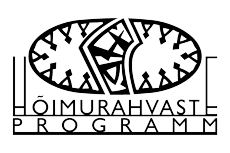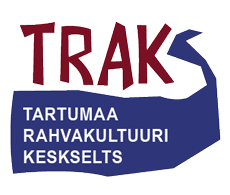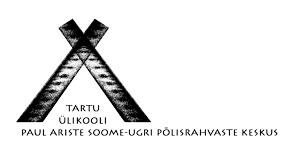Pääskolintu, päivälintu
(The Creation)
Oudekki Figurova (archive recording)
Maarja Oras and choir
In Votian
Pääskolintu, päivälintu,
se ihala ilmalintu
lenteli tšesoizõt päiväd,
üüt pimmiät pilkottõli.
Ettsi maata maatõssõni,
murua munitõssõni,
lehtoja levätesseni,
peltoja pezitäkseni.
Nätši mättä’ä meressä,
sinize mere sizessä.
Valõ vaskizõ pesäize,
muni kultaizõd munaizõd.
Tuli tuuli, aivoi tuuli,
mere vihkura vihainõ,
laukas pesä Laukahase,
veeretti munad vettehe.
Täütü pääsko itkõ’õma.
Pääsko itki, tšüünel veeri.
Lentä’äs sepä katolõ:
„Seppüeni, velvüeni,
tagoid enne, tagoid egle,
tago siis tänävä-päivä!
Tee sa millõ haravainõ,
vala varsi vaskinõ ja
paa vaa piit terässized,
millä ajan mere kokko,
kopitan kultaizõd munõizõd!“
In English
Swallow, the bird of day,
This nice bird of flight
Flew for summer days,
Played for dark nights,
Looking for land to lie on,
Grass to lay eggs,
Leaves to rest,
A field to nest.
It spotted a turf in the sea,
In the blue sea.
Built a copper nest,
Laid golden eggs.
Wind came, proper wind,
Angry whirlwind over the sea,
Pushed the nest to the Lauga River,
Rolled the eggs in the water.
The swallow would cry.
The swallow cried, a tear rolled.
It flew to the blacksmith’s roof:
“Dear blacksmith, my brother,
You’ve forged before, forged yesterday,
Forge today as well!
Forge me a rake,
Pour it a copper handle,
Make tines of steel,
With this I’ll sweep the sea together,
Collect the golden eggs!”
In Votian written language
Pääskolintu, päivälintu,
se ihala ilmalintu
lenteli tšesoizõd päiväd,
üüd pimmiäd pilkottõli.
Ettsi maatõ maatõssõni,
murua munitõssõni,
lehtojõ levätesseni,
peltojõ pezitäkseni.
Nätši mättä’ä meresse,
sinize mere sizesse.
Valõ vaskizõ pesäize,
muni kultaizõd munaizõd.
Tuli tuuli, aivoi tuuli,
mere vihkura vihainõ,
laukkas pesä Laukahase,
veeretti munad vettehe.
Täütü pääsko itkõ’õma.
Pääsko itki, tšüünel veeri.
Lentä’äs sepä katollõ:
„Seppüeni, velvüeni,
tagoid enne, tagoid egle,
tago siis tänävä-päivä!
Tee siä millõ haravainõ,
vala varsi vaskinõ ja
paa vaa piid terässized,
millä ajan mere kokko,
kopitõn kultaizõd munõizõd!“
“The Creation Song” tells about the creation of the world. A bird flies over the sea and finds a patch of land where it lays its eggs, which in other song versions turn into celestial bodies and other important parts of the world. The creation song is known among all Baltic-Finnic peoples who sing runo songs—next to Votians, also Estonians, Ingrians, Finns, and Karelians. In the Estonian tradition, the bird usually lands on a paddock and a shrub, sometimes also a swing. In Karelia, the bird lays its egg on Väinämöinen’s knee, protruding from the water. In different places, the bird laying eggs is associated with different motifs, such as raking or sweeping the bottom of the sea, as in this song here. The creation song has its origins in the international legend of a world egg, which was known among others by Ancient Egyptians, Chinese, Japanese and Peruvian Incas. Interestingly, the legend is not known among our closest Indo-European neighbours.
The song text here was written down in 1947 by Paul Ariste in the Kukkuzi village from Mat´o Gerasimova, a singer from the Jõgõperä (Krakolye) village. The first part of the song also belonged to the repertoire of Oudekki Figurova, Mat´o’s husband’s niece, who recalled that the song used to be sung by Ingrian women.
T Oudekki Figurova, Rajo (Ariste 1986, 30, 65–66, 77), Maťo (Matrjona) Gerassimova, Jõgõperä (Ariste 1960, 39, 77–78).
M Oudekki Figurova (Paul Ariste, Aino Valmet, Ingrid Rüütel 1966, RKM, Mgn II 1235 c, e); Valpuri Vohta, Kalliviere, and choir (Lauri and Aili Laiho-Simonsuuri 1937, ERA, Pl 127 B2, 129 B1).
A Oudekki Figurova (Paul Ariste, Aino Valmet, Ingrid Rüütel 1966, RKM, Mgn II 1235 c).





